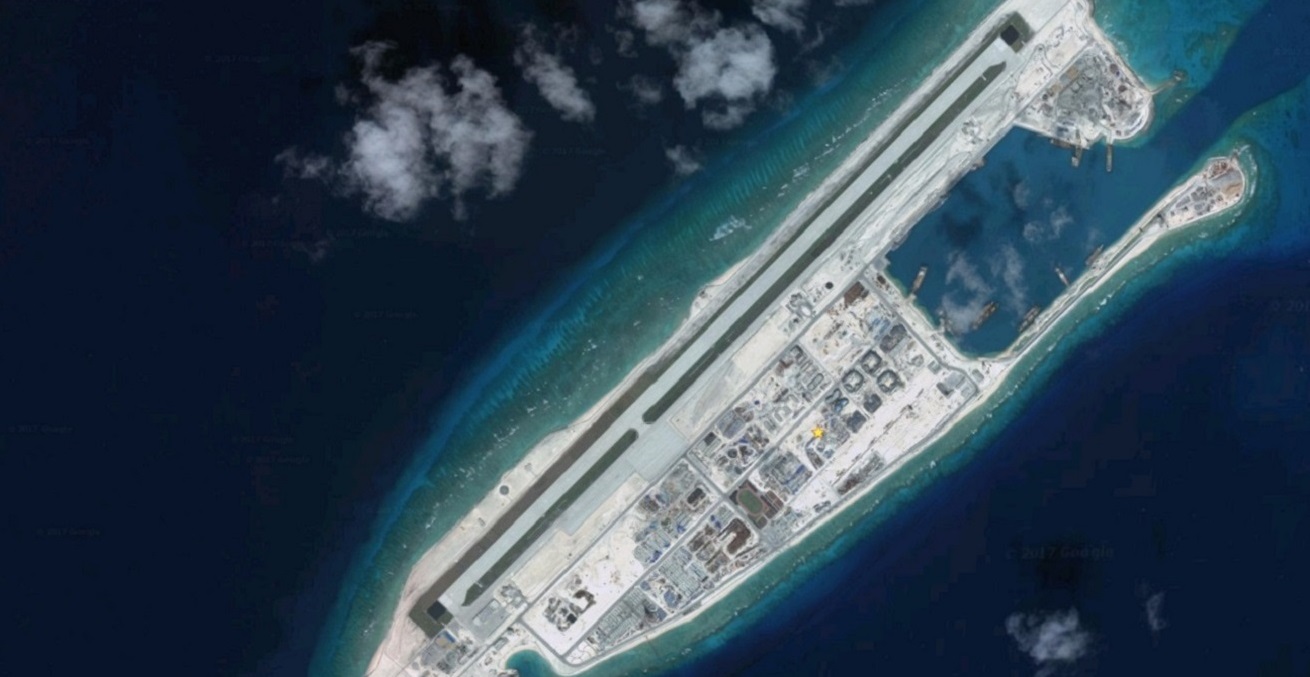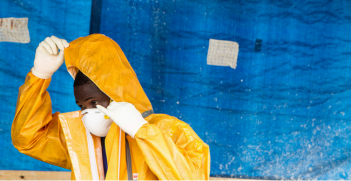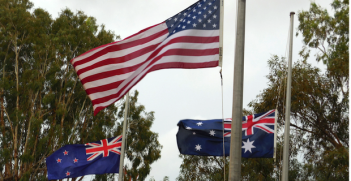Chinese Maritime Vessels Spark Tension in The Philippines

The Manila government raised strong protests when Chinese vessels were seen anchored in the disputed Spratly Islands in the South China Sea. President Rodrigo Duterte embraced China when he came to power five years ago, is this a sudden change of heart?
The Philippines has seen Chinese vessels intruding menacingly on the archipelago’s maritime grounds before. There would be a riposte of diplomatic statements between the two neighboring countries, reaching a stalemate until one of them blinks. It is usually China that wins, out of sheer bulk and power.
In early March, or possibly even as far back as December as shown by satellite feedback, more than 200 of what were described as Chinese maritime militia vessels lined up, side-by-side, on the Whitsun Reef. Known as Julian Felipe Reef to Filipinos, it is situated 175 nautical miles from a backwater town of Palawan province, the country’s western frontier.
The Philippine military may have seen it coming, though it should not have been such a huge surprise since boat detections with the use of visible infrared imaging radiometer suite (VIIRS) have been rapidly increasing over the past five years. In that span of time, the Navy, the Coast Guard, the maritime police – already ill-equipped, miniscule in size compared to China’s vast fleet – could do nothing to stop the encroachments. Despite the territorial infringement, the Filipino fleet had been given implicit though unofficial back-channel orders supposedly from the presidential palace to “stand down,” to monitor but do nothing, and to avoid any confrontation with China. This is particularly remarkable because President Duterte, since his election in 2016, has valued China as one of his closest allies in his misconfigured vision of geopolitics.
When the Philippines suddenly raised the issue of China’s presence in the controversial and disputed Spratly Islands, the belligerent tone coming out of Manila was highly unusual. But the Philippines had clearly lost the game before it could put up a fight. It had lost when, on the very first day Duterte sat in office, it squandered a leverage from an arbitration ruling by an international tribunal in the Hague giving the Philippines victory over rights to its Exclusive Economic Zone (EEZ) to exploit marine resources, oil, and gas in the South China Sea.
President Duterte had made a drastic turnaround, embracing China while setting aside an old ally the United States – a partnership the Philippines may again have to consider in light of the recent crisis. The war of words has largely emanated from his senior cabinet secretaries. From the very start, they toed the president’s pro-China endearments combined with a defeatist line: we can’t do anything to antagonise China, we can’t go to war with such a powerful country. Thus, the government’s policy concerning the South China Sea was put on the backburner.
The secretary of national defense, Delfin Lorenzana, in his official statement, said “I am no fool…. These vessels should be on their way out,” adding in Tagalog, in a tone of brashness, “you’d better leave.” China denied the vessels were that of the militia, saying they were only seeking shelter from fishing in rough weather on Niu’e Jiao, the Chinese name for Whitsun Reef. “Nobody has the right to make wanton remarks on such activities,” the Chinese embassy countered in a statement.
The Philippines didn’t stop there. The Department of Foreign Affairs released a statement declaring, “For every day of delay, the Republic of the Philippines will lodge a diplomatic protest.” But the president himself has remained silent, speaking only through a spokesman in a rather conciliatory note. He was out of public view during the crisis while the country faced a surge in coronavirus cases blamed on the government for its dismal failure of managing the pandemic. Vaccination kicked off at a snail pace in March, with jabs expected from China merely trickling.
The standoff, previously unimaginable under Duterte’s watch, has made for an unusual situation. It isn’t clear where this is going, if there is any strategy to this at all. The Philippines’ latest statement is that it could seek succor from the United States in accordance with a decades-old mutual defense treaty that calls for both countries to help each other if either one is in trouble from foreign aggression. In this case, the South China Sea, which China claims for itself entirely, will be the flashpoint.
It is very unlikely that China will leave Whitsun Reef just on the tough-talking action of the Philippine government; it has never lost in the brinkmanship. President Duterte used to ridicule his predecessor for having given up Scarborough Shoal in the north-western part of the country in an incident in 2014, after China defied an agreement that ships from both sides should leave the waters.
Now, marine experts say Whitsun Reef is Duterte’s Scarborough Shoal, in a manner of comparison. It was the Scarborough ordeal that forced the Philippines to lodge a case in the Hague over the law of the seas, with the international court’s decision coming down in a victory for the Philippines just a day before Duterte took office. It was a brief moment of national pride – the country felt like a David to a Goliath. China says it is not abiding by the Hague’s decision and continues to maintain fishing vessels in the Exclusive Economic Zone
The vessel formation on Whitsun Reef, shaped like a boomerang among a cluster of other islets on the Union Bank, appears to follow China’s so-called swarming strategy. Experts suggest such moves are a prelude to building artificial islands, a naked display of claiming the South China Sea. The Philippines first learned its lesson in 1995 when China started building a fishermen’s shelter in Mischief Reef just east of Whitsun, transforming it years later into a massive air and naval base in the Philippines’ EEZ closer to Palawan province. Previously the Filipino Government had no qualms in protesting any Chinese attempt at incursions and it is unusual that Duterte is taking a similar approach considering his pro-China stance. The Philippines did win the arbitration case giving them leverage when dealing with maritime affairs, however Duterte put that on the backburner when he entered office.
Other country claimants in the Spratly chain of islands includes Vietnam, Malaysia, Taiwan, and Brunei. The Philippines long ago built a small military base on one of its smaller islands called Thitu and inhabited it with local people to form it into a provincial town, but Thitu is no match to the eight missile-protected island bases (including Mischief Reef) China has built over the recent years.
The satellite instrument VIIRS detecting boats on night-time lights have grown in the past few years, from 39,778 in 2015 to 54,357 in 2019 – according to sources who have been monitoring foreign navigation and intrusion. The Filipino coastguards and navy may have pick up a heat signature coming from lights specifically equipped in Chinese vessels, although there were other boats from Vietnam, Malaysia, Indonesia, and Taiwan. Filipino fishing vessels, made indigenously, are not as big and sturdy in the open seas as the Chinese fishing vessels. In 2019, boat detections from the country’s length of the western border went up to 117,202 from 97,437 in the same years.
“Chinese boats have been mooring in this area for many months in ever increasing numbers,” said a statement by the US Embassy. “We stand with the Philippines, our oldest treaty ally in Asia.” The Philippines’ gambit in the South China Sea, whatever it may be, has lured America back into the picture of a three-way affair, turning the script into another cliffhanger in the region.
Criselda Yabes is a writer and journalist based in Manila. Her latest book, The Battle of Maraw, was released in September last year.
This article is published under a Creative Commons License and may be republished with attribution.





